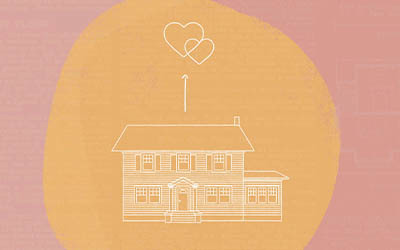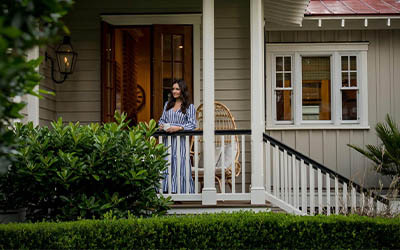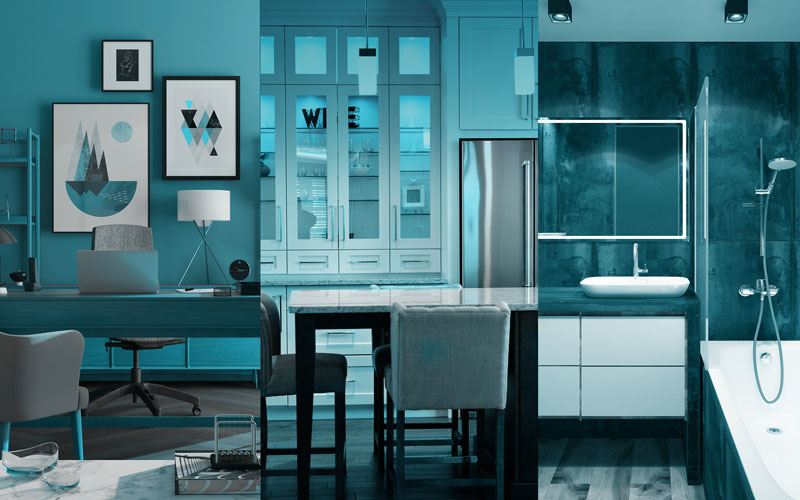Industry Trends
Marketing Insights
In case you missed it, 2020 was a year like no other. Around the globe, people were forced to reexamine their lifestyle habits while adjusting to a new normal way of living. Whether this meant spending more time outdoors or learning a new trade, consumers made huge lifestyle adjustments that affected the economy, the housing market and the environment.
What do these changes mean for the home and building category, both immediately and in the years to come?
Last month, Green Builder Media hosted a sustainability symposium to explore that question and more. In case you missed the event, our key takeaways can help your brand proactively plan against industry trends including consumers’ drive toward more sustainable living.
1. Housing market demand has increased significantly over the past year ...
… with no signs of a slowdown. Economists predict that the housing market will set more records in 2021 as the country slowly recovers from the COVID-19 pandemic.
Home value growth is projected to rise 13.5% by mid-2021, landing at 10.5% by the end of the year. Sales volume is also expected to reach 6.9 million by the end of 2021.
When it comes to actual listings, the typical home currently spends approximately 60 days on the market. Meanwhile, median prices rose 13.7% over the last year to $353,000 in February 2021. According to Green Builder Media, there is no bubble in sight, as the U.S. economy is expected to grow by 5.3% this year (a substantial improvement from the 2.7% contraction in 2020).
With the rise of remote work, more people are leaving urban areas and flocking to the suburbs. However, it’s becoming painfully obvious that communities built in the second half of the 20th century don’t fit today’s post-pandemic homebuyer needs. Many older suburban homes have moisture, structural and durability problems as well as comfort and performance issues, health risks and large energy bills.
Together, these concerns are driving a retrofit revolution.
2. Consumers are investing in home improvement projects at record rates.
Remodeling projects are up by 75% this year in some markets, with homeowners spending, on average, $17,140 (up from $12,000 in 2020). More than half of these remodeling projects have increased performance and sustainability missing from homes constructed prior to 1980. This could mean upgrading from harmful asbestos or lead-ridden materials or transforming the wasteful infrastructure design of the 20th-century suburb. The most common remodeling projects fall into the categories of outdoor living (61%), interior upgrades (58%) and tech improvements (44%).
Limited inventory has shifted consumer expectations: While most buyers prefer move-in ready homes, they’re no longer turning up their noses at listings that need improvement. In fact, 78% of homeowners indicated in a recent survey that they plan to undertake at least one home improvement project in the next year.
As millennials (ages 25–40) approach peak homebuying potential, they tend to invest in properties they can afford rather than move-in ready homes, which is driving the remodeling and DIY market.
Speaking of which ...
3. Millennials are leading the homebuying market.
Driven by a growing desire for financial independence, millennials currently make up 40% of all homebuyers. They identify homeownership with economic security and a desirable lifestyle, and their bullish behavior is driving market trends in ways not previously seen before the pandemic.
For instance, the idea of home as a sanctuary has become extremely important to this group. Nearly 53% of survey respondents ages 25–40 indicated that they would like a larger yard, while 49% would like a home gym and 47% would like a larger home. They also indicated that they are looking to expand usable living spaces into outdoor areas. For the millennial, connecting with nature, supporting fitness goals and having plenty of places to move are all important considerations.
When asked about the most important aspects of their home, millennials ranked a healthy home, smart-home technology and sustainable products at the top of the list. All sustainability features were desirable for 60% of respondents.
4. The home and building category can drive positive change.
The pandemic has driven a heightened emphasis on home as a sanctuary and safe space. More than ever, buyers are connecting the idea of home with well-being, belonging, health and peace of mind. Researchers have also found that homebuyers are making decisions based more on emotions than square footage and market comps. For millennials, this means increased attention to indoor air quality, sustainable technologies and responsible life choices.
This is a time of enormous change and tremendous opportunity for the home industry. Today, homebuyers are learning to be more selective and demanding solutions that best fit their families’ needs. In particular, considering millennials’ tendency to make purchasing decisions based on social values and company missions, home improvement professionals and manufacturers alike have a unique opportunity to be agents of positive change, bringing sustainable practices to the building industry and the world.
Have questions about the information presented in this symposium? Interested to learn how Wray Ward can help your brand harness the potential of an unprecedented landscape? Email me.


